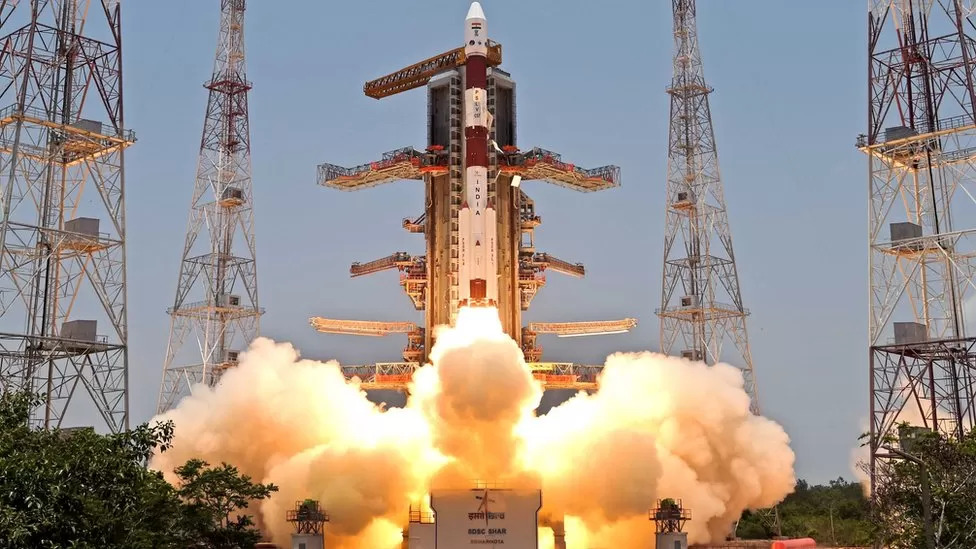Just days after creating history by becoming the first country to land near the Moon’s south pole, India has launched its first solar mission Aditya-L1 to the Sun.
India’s Aditya-L1 will join information collected on other missions designed to study the Sun, including NASA’s ongoing Parker Solar Probe that became the first spacecraft to “touch” the Sun in 2021.
Aditya-L1 is the first Indian spacecraft dedicated to studying the Sun, capping a month of historic successes for the country’s civilian space efforts. The Aditya-L1 rocket lifted off from the launch pad at Sriharikota on Saturday, September 2, to begin its journey of observation. It will travel 1.5 million km (932,000 miles) from Earth – but that’s only 1% of the distance between Earth and the Sun. It will take four months to cover this distance.
The PSLV-C57 rocket was used to launch India’s Aditya-L1.
Aditya-L1 will allow scientists to observe solar activity, solar wind and solar flares and their impact on Earth, and help improve our scientific understanding of the Sun – It is the 4.5 billion-year-old star that forms our Solar System.
Aditya-L1 is heading towards its destination at Lagrange point 1, the region located between the Sun and the Earth where the gravitational pull of both the celestial bodies cancel each other out. That location will allow Aditya-L1 to remain in orbit in the optimal position to observe the Sun’s movements, with modest fuel consumption.
Objectives of Solar Mission Aditya-L1 :
The major science objectives of the Aditya-L1 mission are:
- Study of solar upper atmospheric (chromosphere and corona) dynamics.
- Study of chromospheric and coronal heating, physics of partially ionized plasma, initiation of coronal mass ejections, and flares
- Observe in-situ particle and plasma environments providing data for the study of particle dynamics from the Sun.
- Physics of the solar corona and its heating mechanism.
- Diagnosis of coronal and coronal loop plasma: temperature, velocity, and density.
- Evolution, dynamics and origin of the CME.
- Identify the sequence of processes occurring at several layers (chromosphere, base and extended corona) that ultimately lead to the events of the solar eruption.
- Magnetic field topology and magnetic field measurements in the solar corona.
- Drivers for space weather (origin, composition and dynamics of the solar wind).

